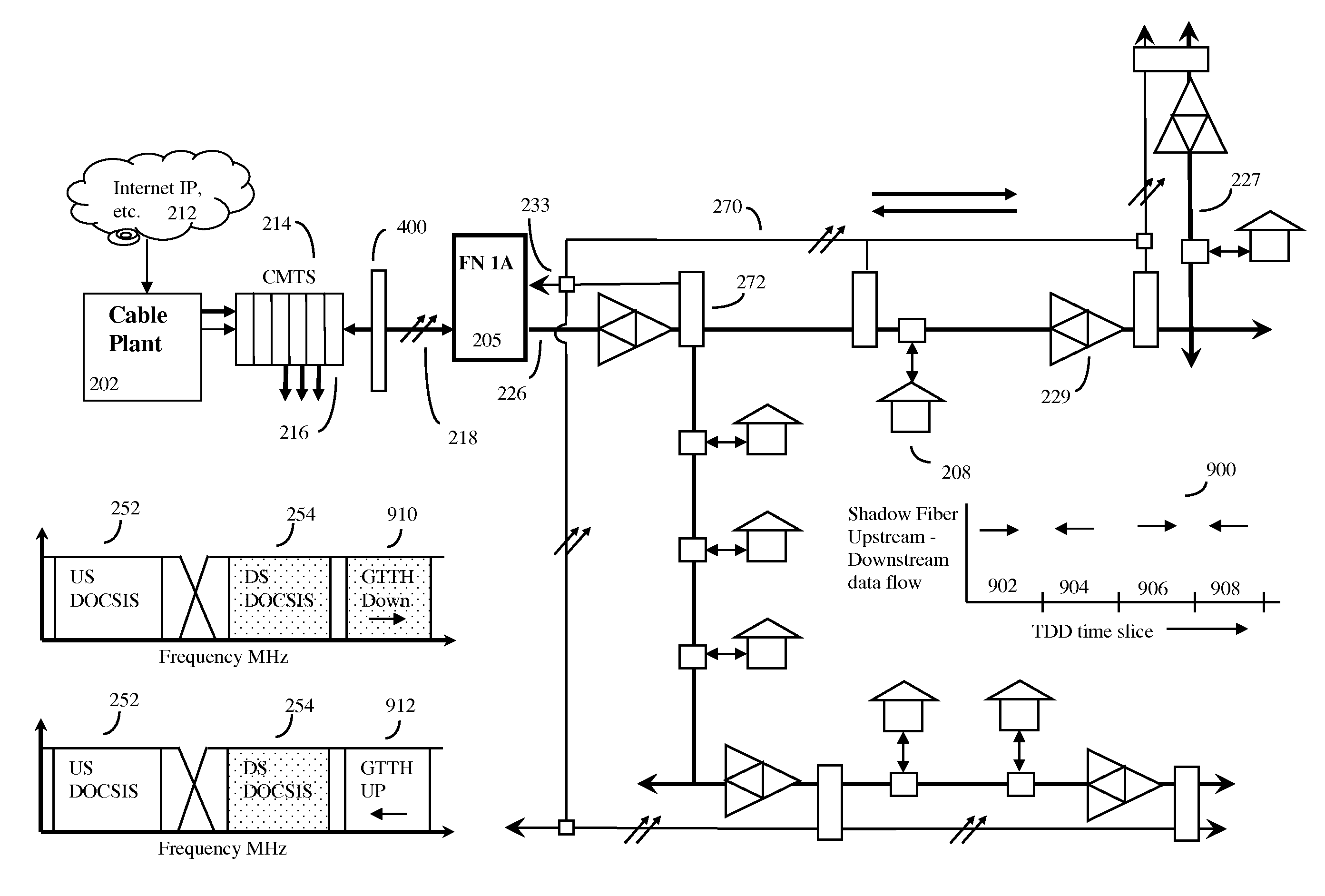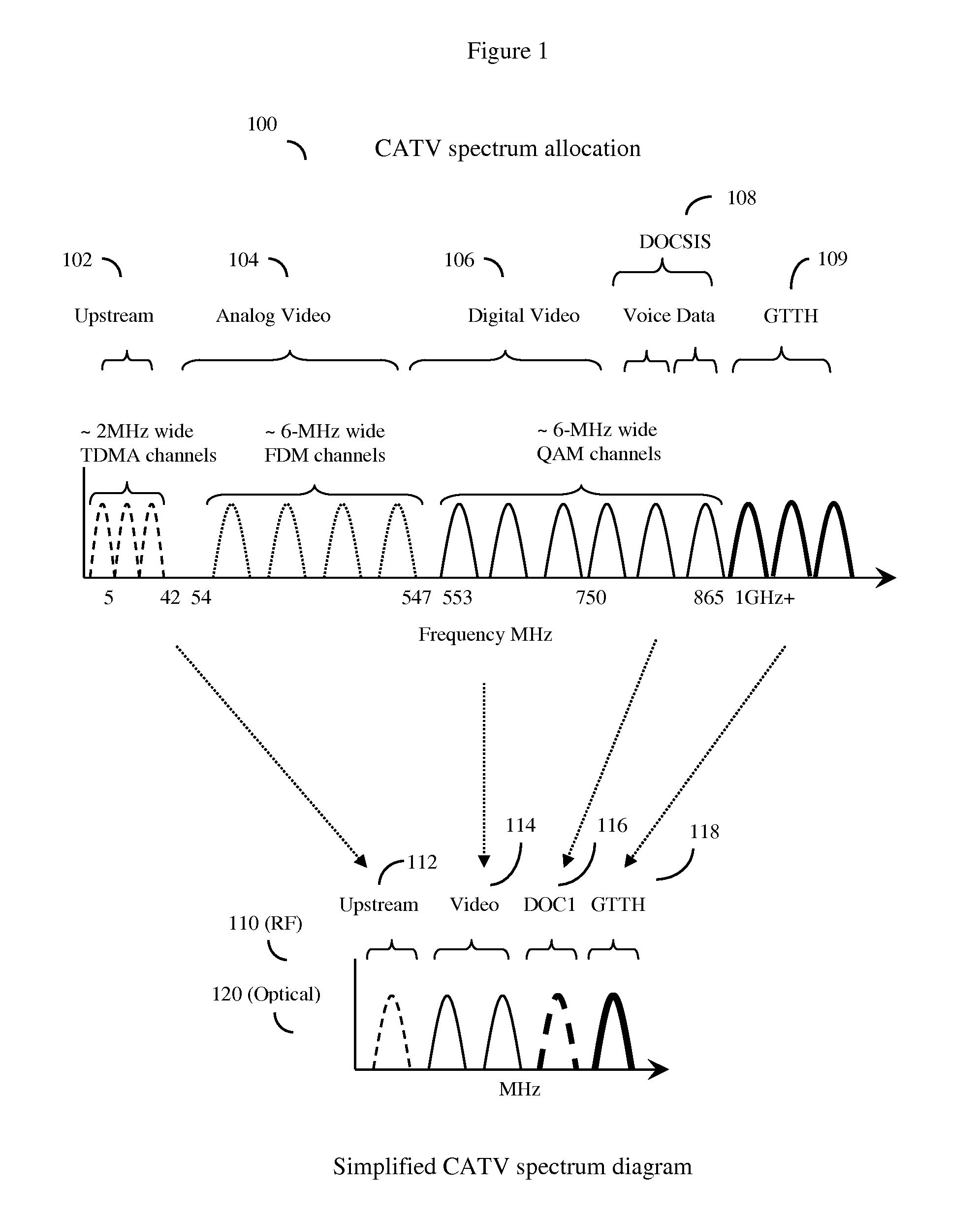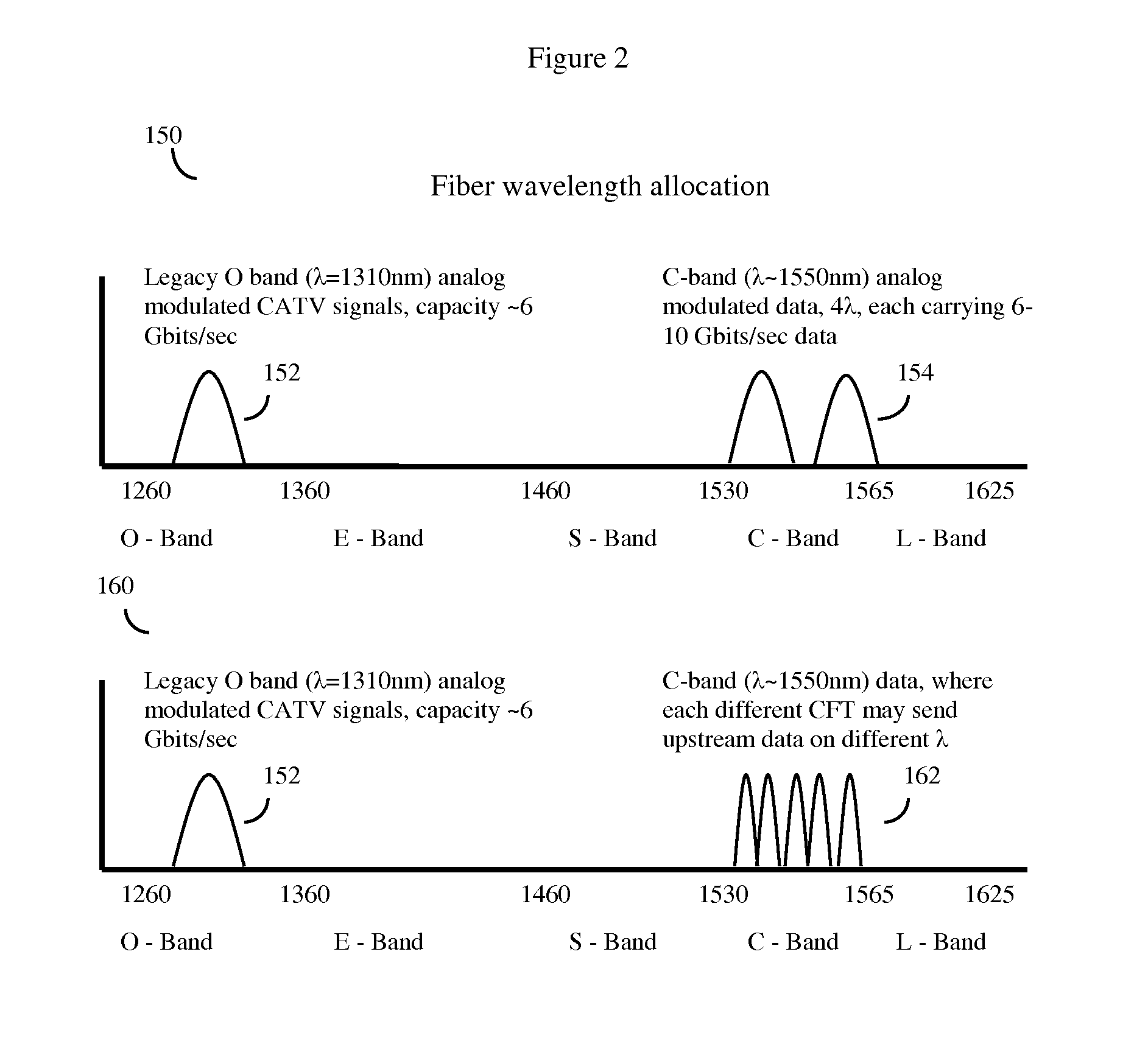HFC cable system with shadow fiber and coax fiber terminals
a hybrid fiber and cable system technology, applied in the field of cable television and hybrid fiber cable systems, can solve the problems of impracticality of fiber to the home (ftth) solutions and the comparatively limited upstream data rate available to the various households connected to any given neighborhood catv cable, and achieve the effect of effective upstream data, and increasing the available upstream bandwidth
- Summary
- Abstract
- Description
- Claims
- Application Information
AI Technical Summary
Benefits of technology
Problems solved by technology
Method used
Image
Examples
Embodiment Construction
[0029]In one embodiment, the invention may be a method for enhancing the upstream data carrying capacity of a hybrid fiber cable (HFC) network. As a simplified overview, such networks can be considered to generally consist of a cable head with a Cable Modem Termination System (CTMS). The cable head will generally supply access to outside networks such as Internet, as well as various types of media content, television network and satellite feeds, and the like. The HFC network will also have at least one trunk optical fiber (typical HFC networks have many trunk optical fibers as well as various transport ring distribution hubs), and this at least one trunk optical fiber node will terminate in an at least one optical node that converts the optical signals back to radio frequency (RF) signals. Each optical fiber node will serve at least one neighborhood CATV trunk cable, and this cable in turn will provide CATV service to neighborhoods, often consisting of about 500 to 2000 homes or bus...
PUM
 Login to View More
Login to View More Abstract
Description
Claims
Application Information
 Login to View More
Login to View More - R&D
- Intellectual Property
- Life Sciences
- Materials
- Tech Scout
- Unparalleled Data Quality
- Higher Quality Content
- 60% Fewer Hallucinations
Browse by: Latest US Patents, China's latest patents, Technical Efficacy Thesaurus, Application Domain, Technology Topic, Popular Technical Reports.
© 2025 PatSnap. All rights reserved.Legal|Privacy policy|Modern Slavery Act Transparency Statement|Sitemap|About US| Contact US: help@patsnap.com



